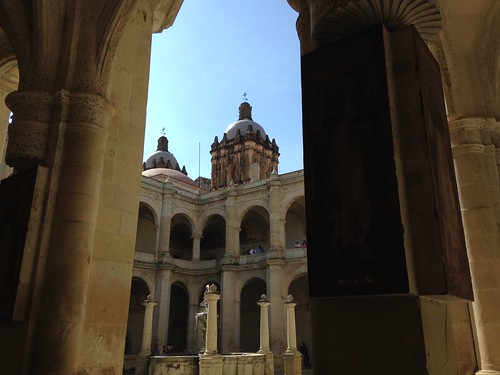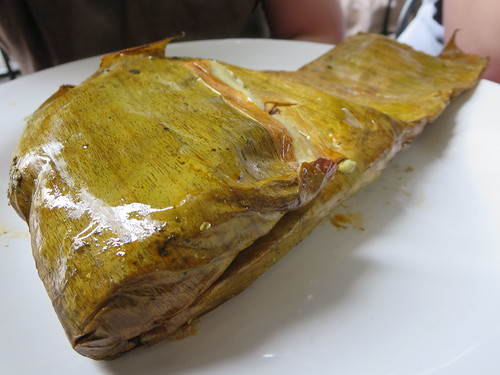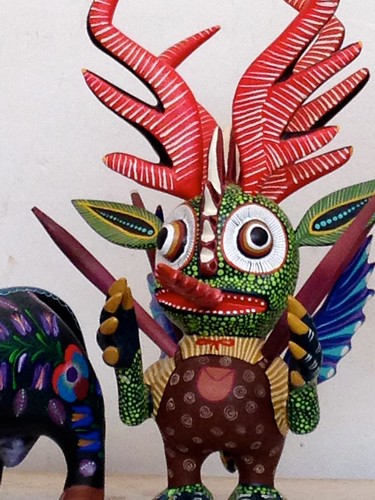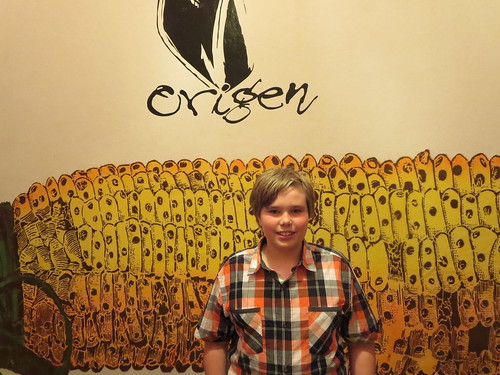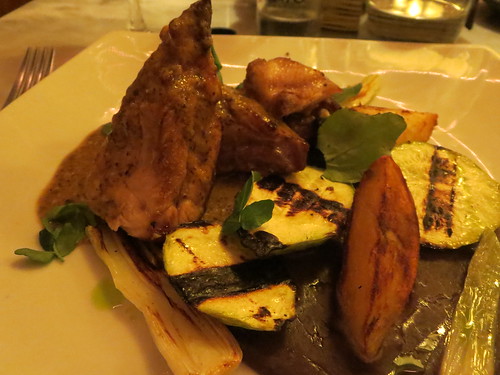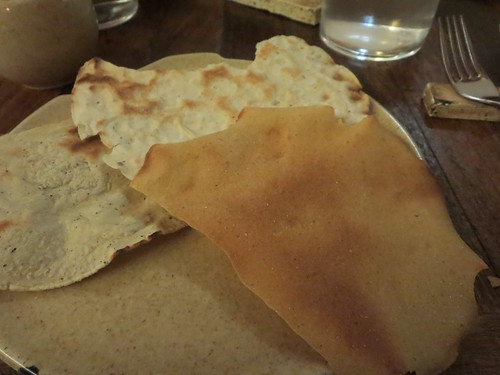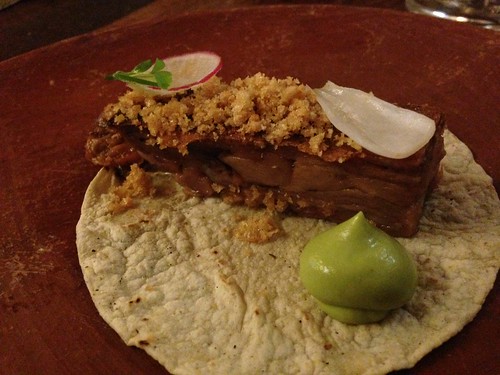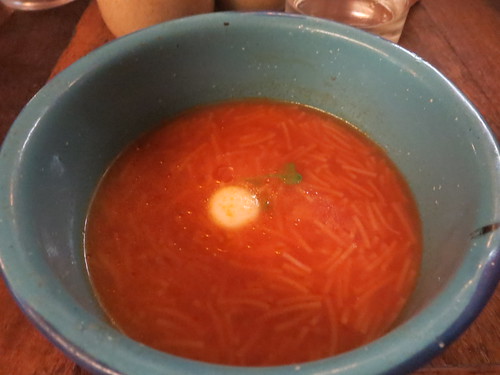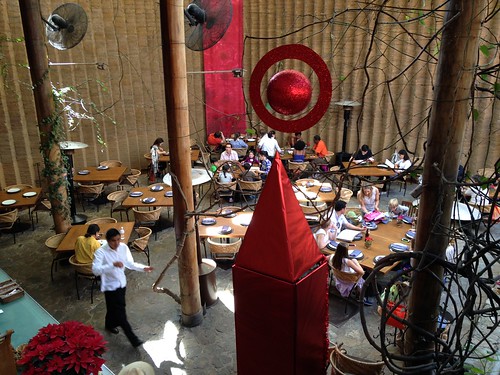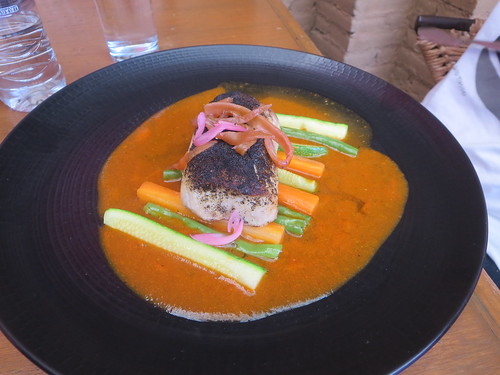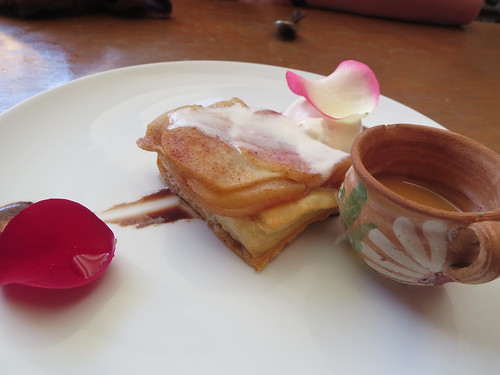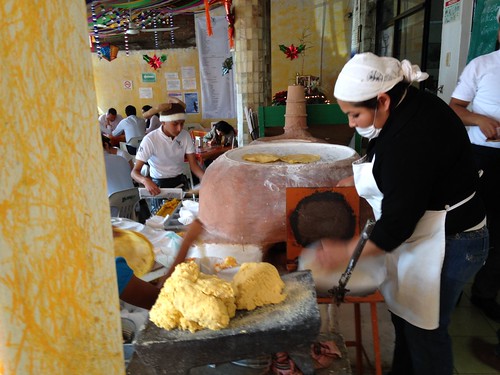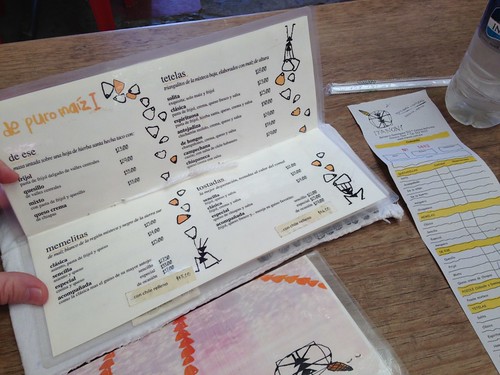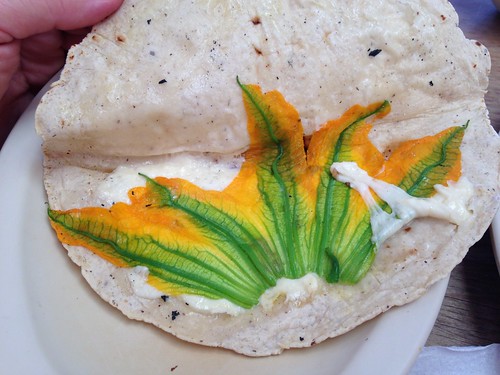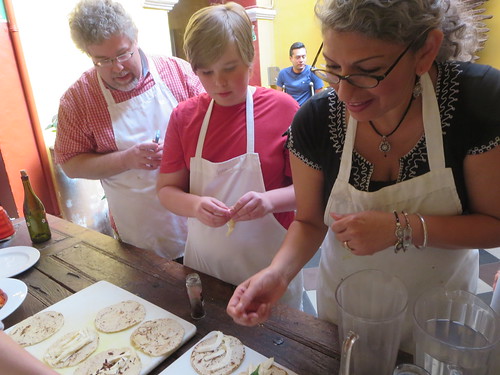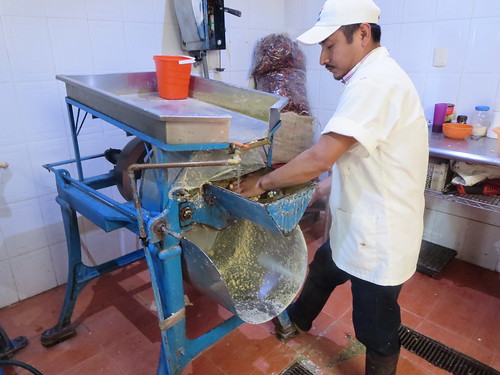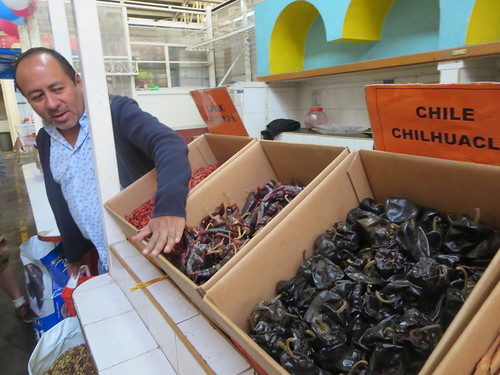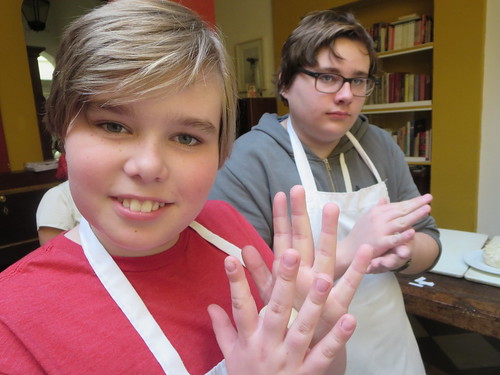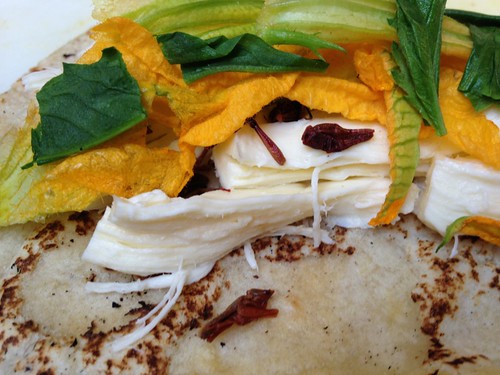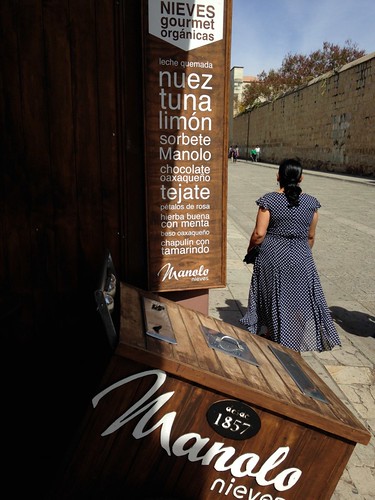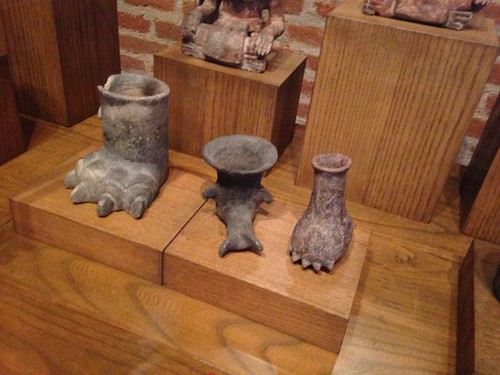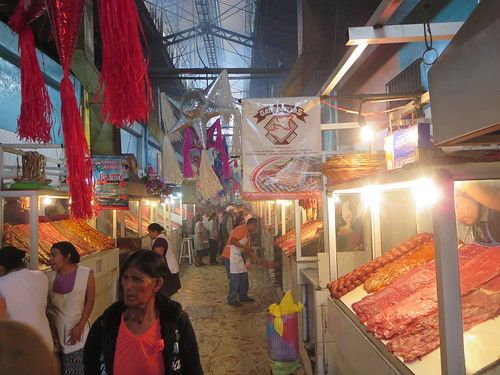
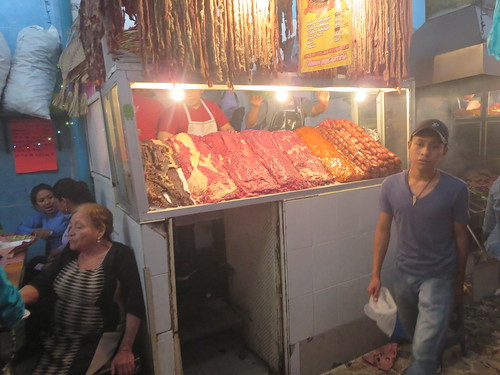
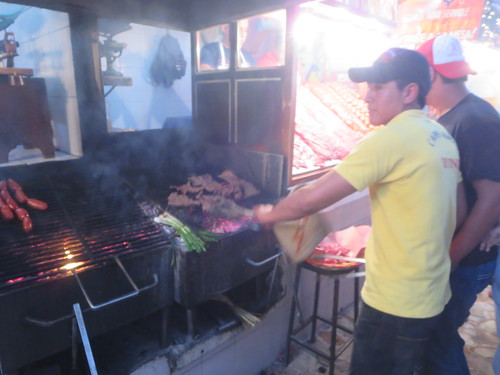
One of the things I most wanted to see in Oaxaca was a single hallway in the markets just south of the Zocalo, the main square, lined with meat vendors and blazing charcoal grills. Yet when I got there, it was frightening and overwhelming, a Dickensian vision of bloody carnage and belching inferno, vendors swirling around me telling me what to buy (onions from him! tortillas from her! drinks from him!) as I could barely keep track of it all. Oaxaca’s market wasn’t magical, as the equally frantic Grand Bazaar in Istanbul had been, it was oppressive, a maddening hive of activity and din.
In another couple of hours I knew why I was having such a reaction: I was coming down with the cold two of my family had already had, coming down with it fast and hard, and my senses were already closing up shop in anticipation. The next day one son and I barely went out, and I was faced with the prospect of spending my entire time in Oaxaca in a hotel room as deprived of my customary diversions as a jail cell, while the very idea of spicy Mexican food turned me slightly green. To add to the postmodern preposterousness of my situation, one of the people whose Oaxacan recommendations I had followed, Rick Bayless, was tweeting from within a mile or two all the things I should be doing, as he lived in social media a Martha Stewartish vision of the celebrity’s glamour-filled, perfect in every way visit to Mexico:
Seeing the families turn out in the zocalo, the square, for Christmas Eve had been one of the goals of the trip— but we’d have been courting pneumonia to be out that night. Instead we found the only subtitled movie in town— El Hobbit— and plopped into chairs for three hours with big soft drinks on Christmas Eve, as if we were the stars of a Family Channel holiday special called “The Most American Christmas In Mexico Ever.” For dinner I ate a prefab ham sandwich at the movie theater. It was great.
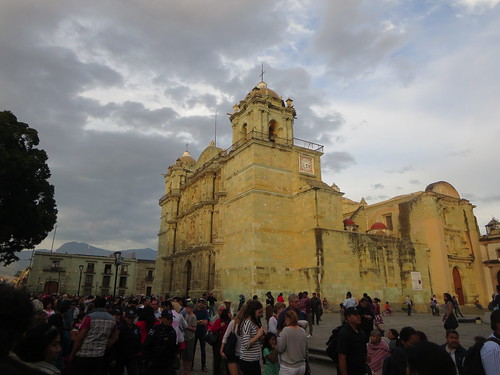
The zocalo, facing the Cathedral of Oaxaca.
And happily, that and 12 hours of sleep seemed to break it. I’m still snuffling— I can’t put out my next podcast until my nose and throat clear enough to record the narration— but energy and interest began to return on Christmas Day and stayed with us for the remaining week of the trip. By the end, Oaxaca had gone from a fate I was cursing to a place I was halfway in love with. The first day back in Chicago, I regretted not being able to wander down the street to a tent hawking tacos al pastor. It seemed so quiet, having to have actual buildings for restaurants, after Oaxaca where they sprout between cracks in every sidewalk.
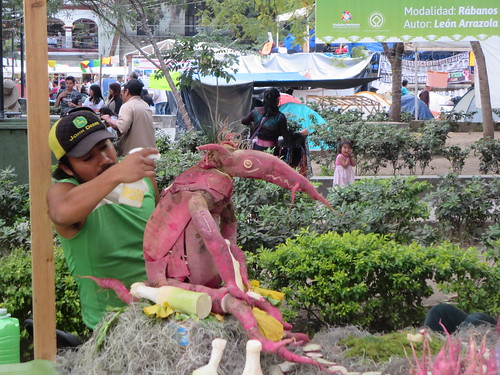
Before I got sick, we managed to see the Noche de Rabanos, carvings from locally grown radishes which line all four sides of the Zocalo, which are displayed on December 23, the night before Christmas Eve.


Anyway, despite losing a day and a half in the middle to the cold, and operating at half speed for a few days after that, we saw our way to a lot of really enjoyable food in Oaxaca, a town of about 400,000 which sprawls over the valleys and hillsides a couple of hours inland from the southernmost side of Mexico as it curves toward central America. Booking late, we couldn’t find anything in the central area, and wound up with a condo in a hotel complex up on 190, the Pan-American Highway, in an industrial/residential district of no particular loveliness. But in a lot of ways that was good; instead of being in an American B&B bubble in town, we took the Mexican buses (about 50 cents) into town and got to see things like the Sunday used car market— where everybody with a used car lines up along 190 and, of course, taco tents sprout everywhere.
The Mexican buses alone were worth the opportunity to take— they’re a whole community unto themselves, the expression of the driver’s personality, decorated up in various fashions, often with a buddy riding along to call out the stops and occasionally picking up vendors demoing the latest release by local musicians or selling trinkets. Other than the fact that they’re built for people on average a foot shorter than me, they were always interesting to ride.

We’re all riding on a pink Mexican bus, a pink Mexican bus, a pink Mexican bus. This was actually a tour bus to Monte Alban, not a city bus, but you get the idea.
The Best Tacos in Oaxaca
Oaxaca is so fecund with itinerant taco stands that you could spend a decade here and not sample them all— on the way back from Monte Alban, we saw an entire taco row we’d never had a glimpse of until then, which had the best-smelling rotisserie chicken of the trip. Another time! The point of taco-hunting, I think, is less to look for some internet recommendation of the very best in town, than to have a sense of how to taco-shop. Look for places where things are being freshly made in front of you, like tacos al pastor being sliced off the cone, or carne asada sizzling on the grill. Up on 190, this friendly place made very good pastor:
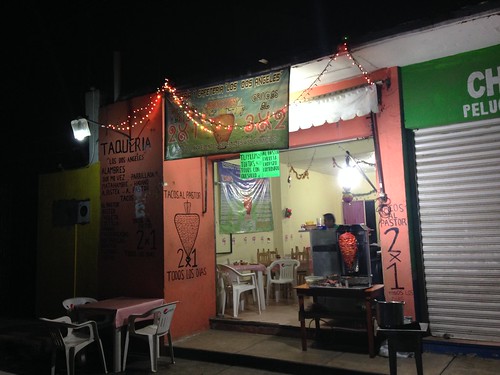
Cafeteria Los Dos Angeles, Oaxaca
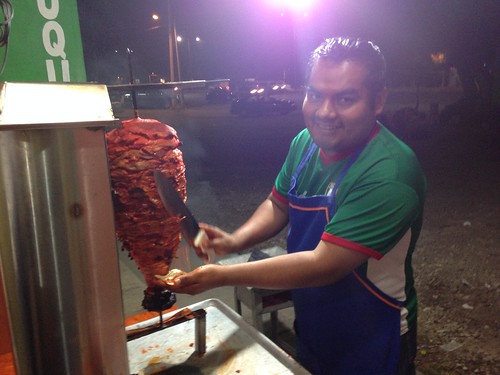
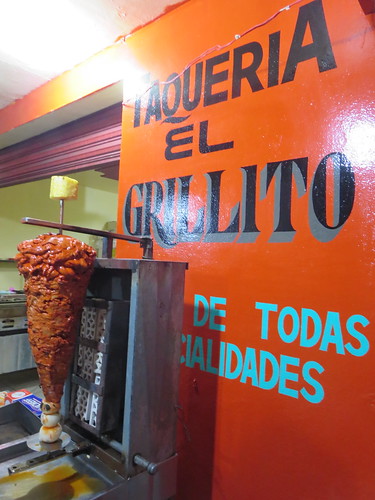
Taqueria El Grillito, alas, did not grillito.
but another fooled us with the cone sitting out, but the meat being cooked on a griddle. Even there, though, we found something kind of interesting, tacos de papas— what would potato tacos with meat turn out to be? The answer was great drunk food, a baked potato finished on the grill and then topped with meat and cheese.

On the weekend, amid the used cars, a row of Michoacan-style carnitas and taco tents popped up. The carnitas were fantastic, pink as ham and maybe the best I’ve had, and the taco tent to its south not only served excellent carne asada but “enchilada” (which I think is just the same thing with a hotter seasoning). I’m not really recommending that you hop a bus out of town a couple of miles to try these specific places, but rather showing how high the level is, that almost anywhere you find a few tents making food, it has a good chance of being this good.
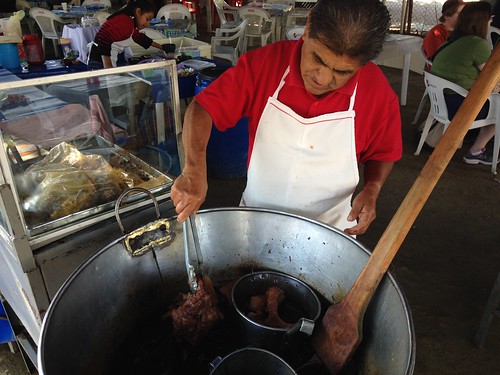
Carnitas de Michoacan.


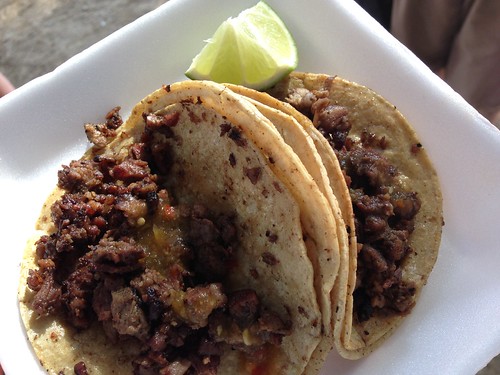
But I promised the best tacos in Oaxaca and maybe I can fulfill that promise. Here’s my theory— food gets better with close competition. So if you were going to find a great taco place, it would likely be in an area dense with competing places, close to the heavy traffic of downtown. The epicenter of tacodom, then, seemed likely to be a specific spot just south of Trujano on the Periferico road that half-circles the central district, a 30s-Shanghai-like warren of stalls next to the enormous Abastos farmer/flea/fenced goods market and right where both the buses and the ride-share taxis all come together in the most harrowing clusterfark of traffic I’ve ever seen. Naturally, my older son and I took off one night to explore it.
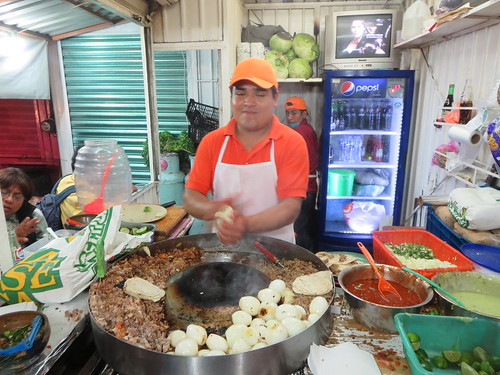
Working the comal at Taqueria Los Cuates.
The taco stands here are more permanent, often cramming into a tiny space both a pastor cone and a metal comal, sort of like a convex wok, on which different kinds of meat will be sizzling. One guy operates the comal, another the pastor cone, slicing off meat and then flicking off a slice of pineapple from the top onto the tortilla held a few feet below. Tacos here are small and dirt cheap— two or three pesos, which is 15 or 20 cents each, though like sliders, you’d probably order a bunch at once, meaning a full dinner could run to as much as $1.50. At the first we tried pastor and tasajo, which is chopped beef (but pretty much has the texture of hamburger):
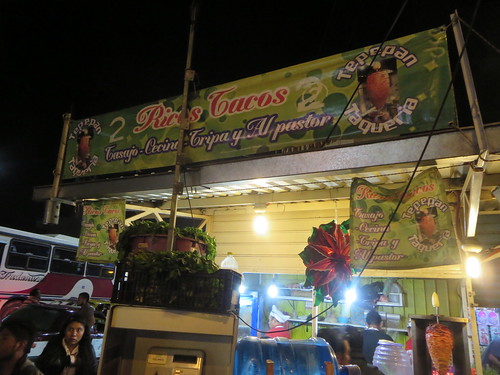
Our first stop— which part of the sign is the name? I’m not sure.
It was very good, but then we reached the next, Taqueria los Cuates. This time I ordered cecina, marinated pork. The pastor was letter perfect, crispy and with a citrusy tinge, but even better was the cecina, cooked with bits of grilled onion which made it taste like a 30s-style hamburger. The meat was flavorful, the tacos, warmed on the center of the comal, were crispy with little toasted edges… this was truly, The Best Taco in Oaxaca that we would find that night, or ever. We tried other things that night, including an empanada from a very peasanty-feeling stall which was however just fair (we abandoned it after a few bites), but nothing would top Taqueria los Cuates, and a few days later, we’d swing by there for another round, just as good, as a pre-dinner amuse-bouche.
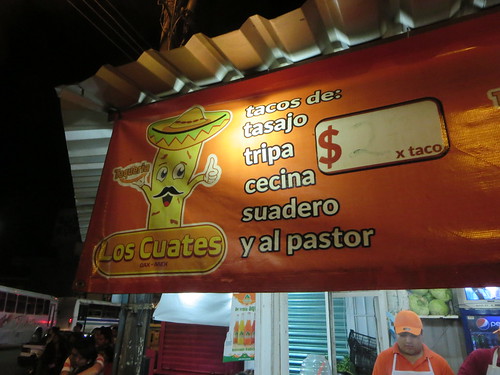
I liked the Achewood-like mascot.
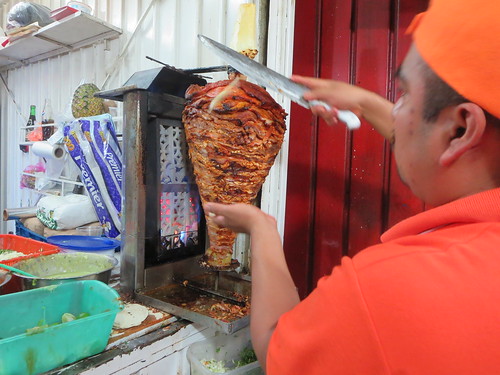
Flicking the pineapple.
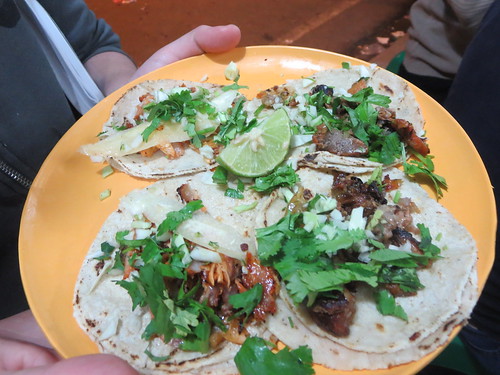
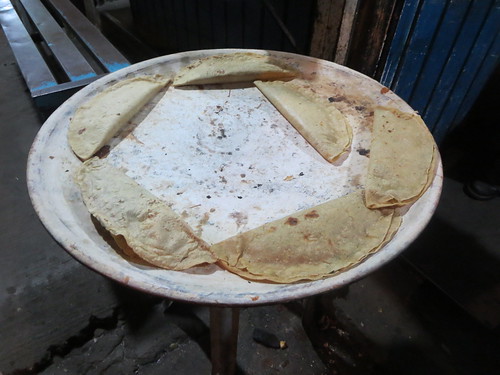
Empanadas on a comal.
Myles and I making notes on video before we forget what we liked.
A few more notes on low-end dining:
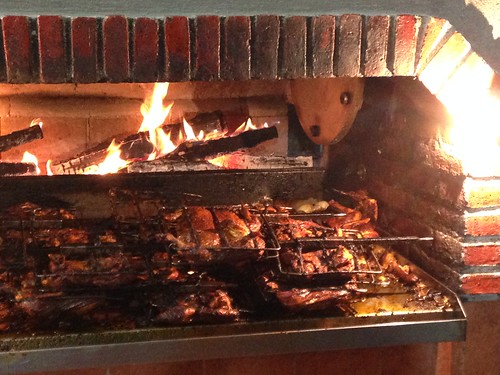
• We only tried Pollo a la Lena, grilled chicken once, on Christmas Day, and encountered an odd situation where they didn’t want to sell us any of the chicken because they were already out of tortillas. At that point I’d be giving the stuff away rather than waste it, but we eventually succeeded at talking them into charging us the full price without giving us any tortillas. Victory! It was perfectly fine, but you’d have to take another trip to try more chicken places to get a sense of what makes for the best.
• There was a Tacos Arabes place I saw, near the Abastos area, selling that doner-inspired precursor to pastor, but he must have taken the time after Christmas off, because it was closed every time after that, alas.
The Mercado de Benito Juarez/Mercado de 20 Noviembre
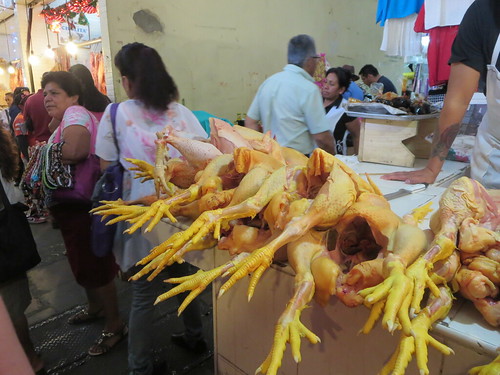
And what about that Dickensian meat hall I mentioned at the beginning? If you’re not out of sorts as I was, it’s a must-visit just for sheer chaos and atmosphere, as is the entire market complex just south of the Zocalo. There are actually two market buildings; the northernmost, the Mercado de Benito Juarez, is full of vendors of trinkets, sombreros, mezcal for tourists to take back, and so on, but it also sells a lot of retail foodstuffs, from chickens and fish to baked goods, the local quesillo cheese (which is a million times better than any Mexican cheese you can get here) and moles, and ladies selling chapulines, spicy fried grasshoppers.
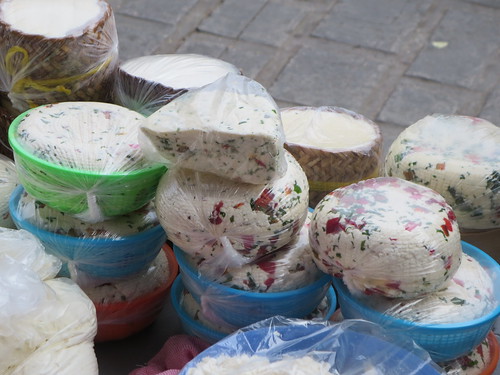
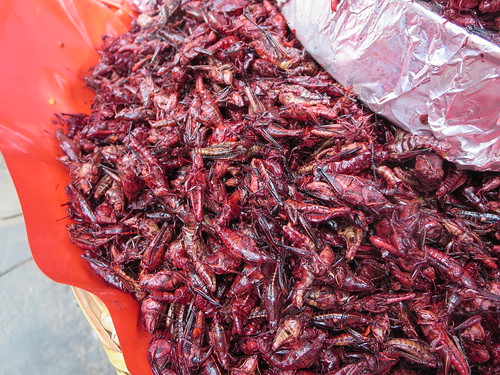
The southernmost, the 20 de Noviembre, is full of restaurant stands serving comida (a homier sitdown lunch than taco stands), usually Oaxacan tamales, Sopa Azteca, that kind of thing. To be honest, although we had a nice meal or two there, after we had been to some of the other markets in the area the 20 de Noviembre seemed grimy and oppressive with both the restaurants and the vendors constantly hawking you (and some elaborate system of hoses bringing up foul odors from the nether regions of the building), and I’d recommend a much more relaxed experience at one like the Sanchez Pascuas organic market a few blocks north.
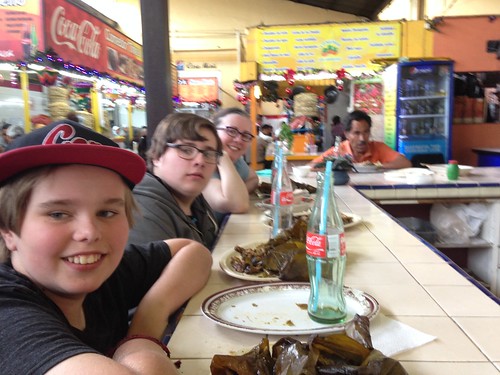
A pleasant comida of Oaxacan tamales and soup in the 20 de Noviembre market.

But there are two food stops in the first building, the Mercado de Benito Juarez, that you want to make. One is the aforementioned meat hall, which is somewhat separate and difficult to find from the inside, most easily found by looking for its separate entrance on the east side of the building. It’s an elemental food experience well worth having, though I was a bit disappointed that all the steak seemed to be thinly sliced and grilled to chewiness; I’d have loved a thicker cut cooked to medium rare. You order by the kilogram; we got one kilogram, 1/4 the balls of spicy chorizo, 3/4 steak, plus onions, salsas and tortillas, each ordered from and paid to a different person, in an atmosphere of complete frenzy where it seems hard to imagine anyone really collects all the money they’re due, but apparently they do.
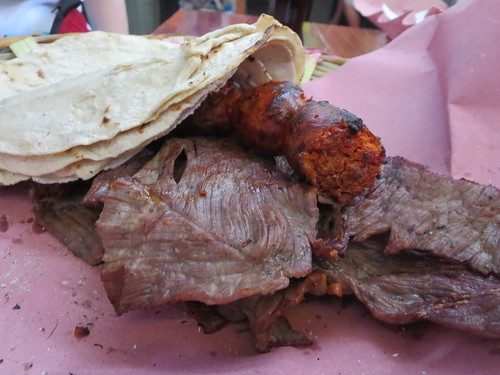
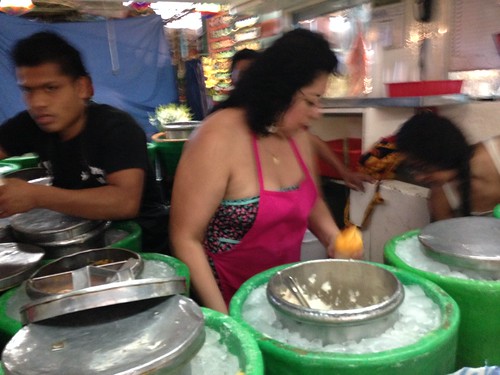
La Chagüita.
The second is La Chagüita, an equally chaotic ice cream stand. Rick Bayless talked about this on The Feed but was vague about the precise location, and the rest of the internet is vaguer yet when not flat-out wrong (like Google Maps), so let me tell you the easiest way to find it: it is inside the Mercado Juarez, which has five main aisles, and the stalls in each are numbered something like 15, 115, 215, etc. La Chagüita is #27, so enter at the southeast corner, where the fresh fish are, and look for the first aisle, the two-digit numbers. Go straight north in that aisle and you’ll soon hit it (and other ice cream places).
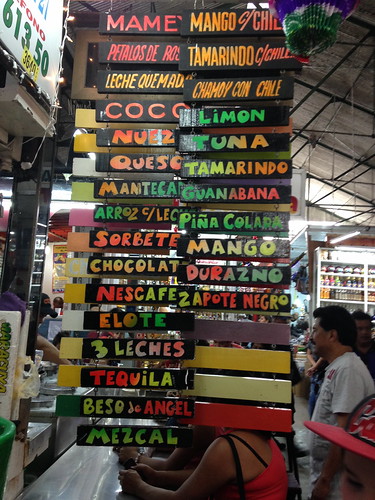
Anyway, the reason that you want to do this is for the wildly exotic array of flavors of— what is it exactly? Sorbet? A slushy? I’m not sure, but it’s pretty great and the scene is highly entertaining. I ordered mango with chile and guanabana, which for some reason provoked hilarity from the staff, but I was happy as could be with my tangy, slushy choices.
That pretty much covers cheap eats; a post on fine-ish dining will follow. But I took two things away from taco hunting in Oaxaca— one, how good the street food is, but two, how good the Mexican food in Chicago is, in that I didn’t have things that made the food we have here seem a pale shadow of the real thing. Our batting average isn’t as high, but you can find things here that are about as good as most of the food we ate. Oaxaca is one of the great Mexican food cities, but in its own way, so is Chicago, don’t let anybody kid you. Well, except for the Mexican cheese.
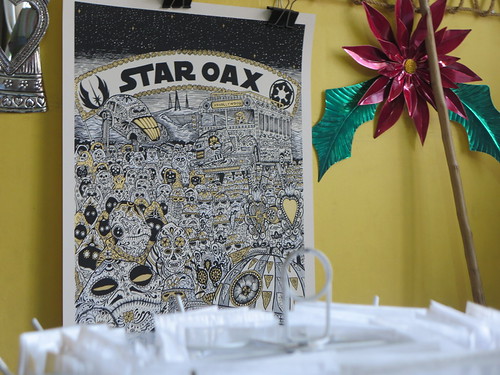
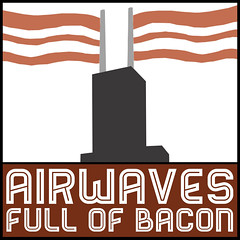

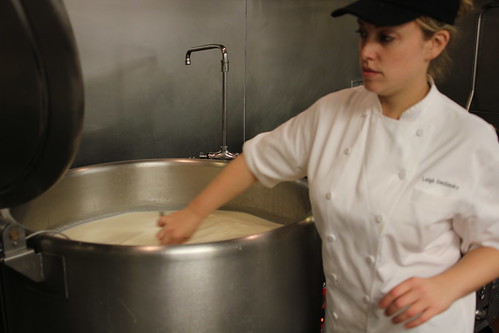
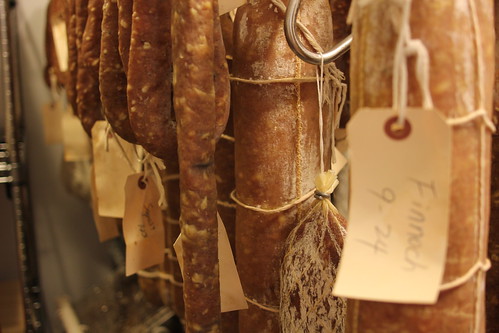

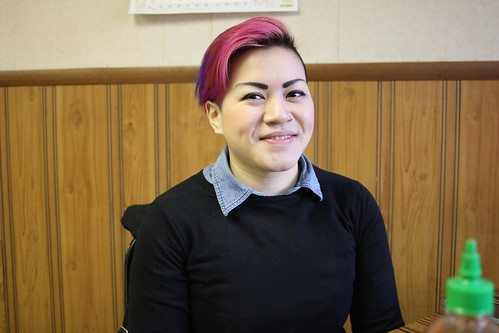
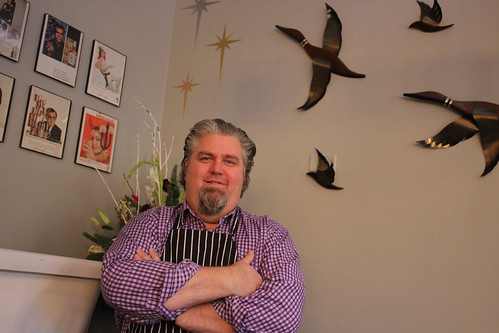
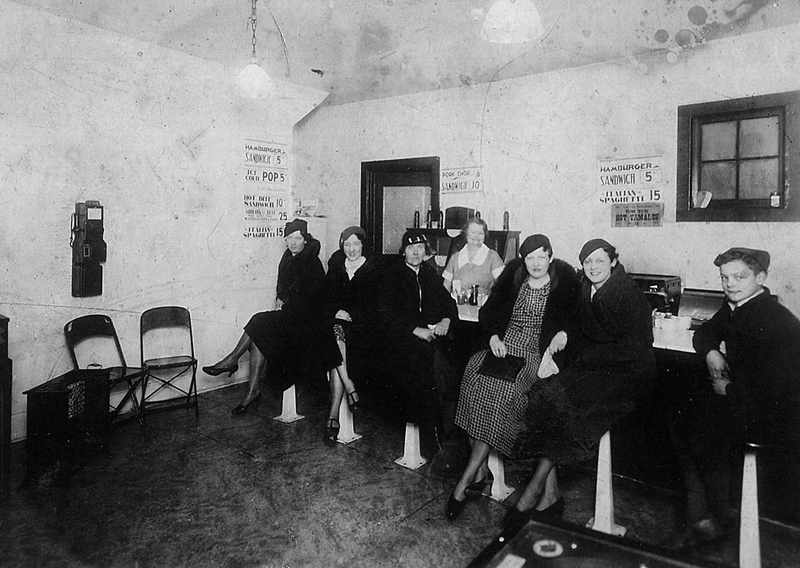



 Posted in
Posted in 





